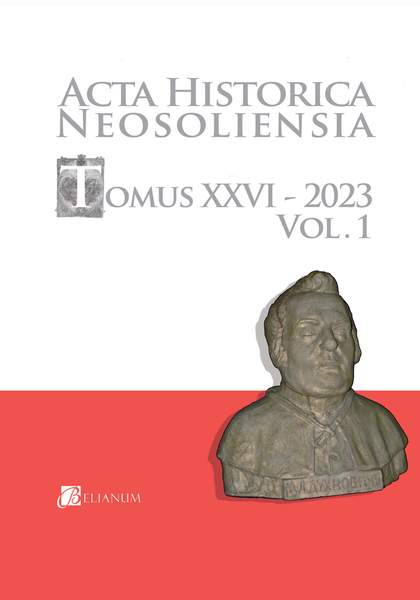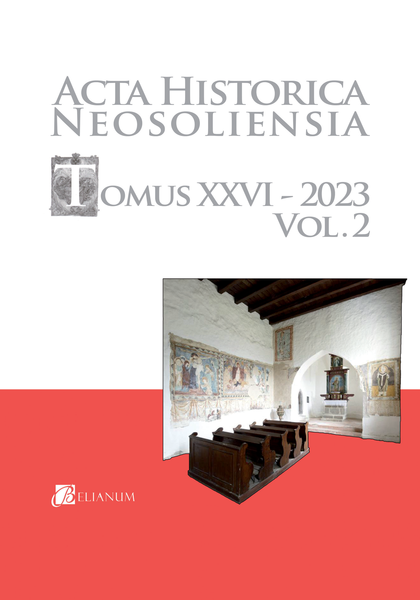Prečo sa vytratil „svet 60. rokov“? O príčinách úpadku mládežníckeho protestného hnutia druhej polovice 60. rokov v krajinách západnej Európy a USA
ANDRIY MINAYEV – TETIANA MINAYEVA
Černivecká národná univerzita Jurija Feďkovyča – Černivecké oblastné vlastivedné múzeum, Černivci, Ukrajina
Why did the “world of the 1960s” disappear? About the reasons for the decline of the youth protest movement in late 60s of the XX century in the countries of Western Europe and the USA
Abstract: The article is about the reasons of the decline of the Western European and USA youth protest movement in late 60s of the 20th century. According to the authors, the main reasons for the decline of the Movement are: the spontaneity of the protests, the absents of the joint coordination of actions, mistrust political institutions, the narrowness and limitations of ideas and slogans). The change of attitude towards the youth by the government circles and public of the Western countries in the early 1970s played an important role in the minimization of protest activity. As the result of it was the development of a fundamentally new youth policy based on the “whip and gingerbread” method: on the one hand, there was a strengthening of the repressions against riots participants, and on the other hand, the involvement of youths representative into political, state, business and public institutions with the aim of integration began protest activists in public life. Finally, the new trends in the social and political development of the Western countries in early 1970s become the significant factor in the decline of the protest movement. Such trends included changes in economic, political and cultural interactions in countries of Western Europe and USA, in particular the deterioration of the economic situation, as well as the extension of the social elite at the expense of students and graduates of technical and economic faculties. Finally, the new trends in the social and political development of the Western countries in early 1970s becаme the significant factor in the decline of the protest movement, in particular the deterioration of the economic situation, as well as the expansion of the social elite at the expense of students and graduates of technical and economic faculties. This contributed to the further erosion of the social base of the protests and the focus of youth on their careers.
Keywords: “the world of the 1960s”, youth, students, youth protest movement, decline of protest activity, the internal disadvantages of protests, flexible government youth policy, economic complications of the 1970s in Western countries.
Archív
Úplné textové verzie vo formáte PDF
- Acta historica Neosoliensia - Tomus 26, num. 1
- Acta historica Neosoliensia - Tomus 25, num. 2
- Acta historica Neosoliensia - Tomus 25, num. 1
- Acta historica Neosoliensia - Tomus 24, num. 2
- Acta historica Neosoliensia - Tomus 24, num. 1
- Acta historica Neosoliensia - Tomus 23, num. 2
- Acta historica Neosoliensia - Tomus 23, num. 1
- Acta historica Neosoliensia - Tomus 22, num. 2
- Acta historica Neosoliensia - Tomus 22, num. 1
- Acta historica Neosoliensia - Tomus 21, num. 2
- Acta historica Neosoliensia - Tomus 21, num. 1
- Acta historica Neosoliensia - Tomus 20, num. 2
- Acta historica Neosoliensia - Tomus 20, num. 1
- Acta historica Neosoliensia - Tomus 19, num. 2
- Acta historica Neosoliensia - Tomus 19, num. 1
- Acta historica Neosoliensia - Tomus 18
- Acta historica Neosoliensia - Tomus 17
- Acta historica Neosoliensia - Tomus 16
- Acta historica Neosoliensia - Tomus 15
- Acta historica Neosoliensia - Tomus 14
- Acta historica Neosoliensia - Tomus 13
- Acta historica Neosoliensia - Tomus 12
- Acta historica Neosoliensia - Tomus 11
- Acta historica Neosoliensia - Tomus 10
- Acta historica Neosoliensia - Tomus 09
- Acta historica Neosoliensia - Tomus 08
- Acta historica Neosoliensia - Tomus 07
- Acta historica Neosoliensia - Tomus 06
- Acta historica Neosoliensia - Tomus 05
- Acta historica Neosoliensia - Tomus 04
- Acta historica Neosoliensia - Tomus 03
- Acta historica Neosoliensia - Tomus 02
- Acta historica Neosoliensia - Tomus 01

Interetnické vzťahy v prostredí Rusínov a Slovákov (na Slovensku a na Dolnej zemi) v 19. storočí1
MICHAL ŠMIGEĽ – MIROSLAV KMEŤ
Katedra histórie, Filozofická fakulta, Univerzita Mateja Bela v Banskej Bystrici
Inter ethnic relations in the environment of Rusyns and Slovaks (in Slovakia and the Lowland) in the 19th century
Abstract: Rusyns and Slovaks, members of two culturally close ethnic groups, had lived for centuries in one state unit and in immediate neighbour contact. Complex socio-economic situation of the Rusyn settlement area in Slovakia had conditioned the poor development of both cultural and national needs. Rusyn intelligentsia from Greek-Catholic church circles had tended towards Hungarian culture or a broader Slavic consciousness. From the beginning of the 19th century and during the spread of pan-Slavism with the development of national movements and the formation of modern nations, Rusyns became the object of interest in Slovak intellectual circles. The Rusyn elite, inspired by Slavic and non-Slavic national movements, revived nationally in the revolutionary period of the 1840s. It was also the merit of Slovaks who supported the national awakening of Rusyns as their closest allies in the Kingdom of Hungary during the peak period of the Slovak national revival movement (1836–1848). The mutuality of Rusyn-Slovak political cooperation had been manifested in the revolutionary years of 1948–1949 in the Habsburg Monarchy. Even though the revolution in the Kingdom of Hungary had failed, it had brought some significant changes in the sphere of social development, civil principles and the weakening of the influence of the state and the church. These new conditions had enabled the emergence and development of Rusyn national revival movement and the so-calledrevivalistic generation of Rusyns. Mutual contacts between the two national movements, especially in the post-revolutionary period, had symbolized social, political and literary activities of several nationalities. Even in the second half of the 19th century, Slovak elites had a positive influence on the development of the Rusyn national movement. Slovak environment had an inspiring effect on Rusyns. Of course, this relationship had not only worked from the side of Slovaks to Rusyns, but also in the opposite direction (in a lesser extent), i.e. from Rusyns to Slovaks. Finally, during the period of dualism (1867–1918), the reflection of Rusyn issue in Slovak literature was not as intense as before the revolution, which was related to strong national oppression of minorities by the Hungarian governments. The national movements of Rusyns and Slovaks had to cope with a very complicated political and social reality, so there was much less scope for wider cooperation and mutual reflection than before. Complex socio-economic situation of northern and northeastern Kingdom of Hungary at the end of the 19th century together with the rapidly increasing Slovak and Rusyn emigration had a significant influence on this.
Keywords: Rusyns and Slovaks in the 19th century, ethno-identification and nation-forming processes, Rusyn national movement, Slovak and Rusyn national revival movement, Štúr generation, Rusyn revivalistic generation, the revolution in Hungary (1848–1849).
1 Štúdia je výstupom z grantovej úlohy VEGA č. 1/0426/20 „Slovenské dolnozemské komunity v reflexii materskej krajiny počas medzivojnovej Československej republiky“.

